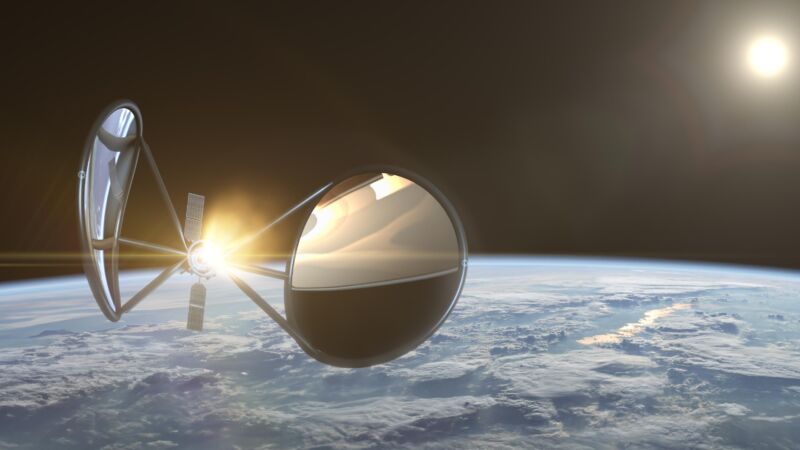
Portal Space Systems
Over the course of the last seven decades, the vast majority of satellites have launched into orbit with propulsion mostly as an afterthought. That’s not to say having thrusters is not important, but once the vehicle reached its intended orbit, the on-board propulsion was used mainly for station keeping and small maneuvers.
One of the truisms about spaceflight, in fact, has been that a vehicle isn’t going anywhere after it reaches a particular orbit. That’s because the energy needed to make significant changes in one’s orbit around Earth is very high.
In space today, the current choices of on-orbit maneuverability are not optimal. There are conventional rocket-powered thrusters that require an extraordinary amount of propellant to move around. There are ion thrusters, which are significantly more fuel-efficient, but cannot make changes quickly. And that’s really about it.
Delta-v is hard
But a new company, Portal Space Systems, emerged from stealth on Tuesday with an alternative: solar-thermal propulsion. The company’s founder, Jeff Thornburg, said Portal Space will focus on mobility in orbit.
“All propulsion has historically been designed for station keeping for satellites, not maneuverability,” he said in an interview. “And too many commercial and military customers are struggling with how to spend the very little delta-v they have before they end the life of their asset.”
“Delta-v” is how the space industry measures the change in velocity that a spacecraft is capable of—more precisely, it is a measure of the impulse per unit of spacecraft mass. So if your spacecraft has a delta-v capability of 500 meters per second (1,120 mph), and starts at a velocity of zero, then after it burns all of its propellant it would be traveling at 500 m/s.
This turns out to be the currency of the Solar System. It requires an extraordinary amount of delta-v to go from the surface of our planet into low-Earth orbit (LEO)—very nearly 10,000 m/s. This is why powerful rockets are needed to launch satellites. After reaching LEO, the relative delta-v costs to go places from there are lower, but still high. For example, it costs another 6,000 m/s to reach the surface of the Moon from LEO. This chart provides a good overview of the costs of delta-v.
Most satellites launch with 500 m/s or less of available delta-v. This allows them to fine-tune their orbits, and perform some basic maneuverability to avoid conjunctions with other satellite or debris. But this is not enough propulsive capability to make meaningful changes to their orbits.
Delta-v for thee
This is where Portal Space believes it has a solution. Thornburg says the company is developing a spacecraft built around the concept of solar thermal propulsion, which uses solar energy to heat propellant and produce thrust. Such engines have been studied for decades, but have never been developed for practical purposes. The company has not disclosed its propellant of choice, but Thornburg said it is storable on orbit, and not toxic like hydrazine. (It might be something like ammonia).
Since founding Portal in November 2021, Thornburg says he and his team are solving the technical challenges inherent in the system with their Supernova satellite bus. These spacecraft, he said, will pack an impressive amount of mobility—6,000 m/s of delta-v. That’s enough to move from higher orbits to cislunar space, and back.
He envisions a fleet of refuelable Supernova vehicles at medium-Earth orbit and geostationary orbit that will be capable of swooping down to various orbits and providing services such as propellant delivery, mobility, and observation for commercial and military satellites. His vision is to provide real-time, responsive capability for existing satellites. If one needs to make an emergency maneuver, a Supernova vehicle could be there within a couple of hours.
“If we’re going to have a true space economy, that means logistics and supply services,” he said.
Developing a spacecraft with a novel propulsion system and an enormous amount of delta-v capability may sound ambitious, especially for a small startup. But Thornburg has some credible experience, having worked in the military, for NASA, and at various space companies including SpaceX, where he was a vice president of propulsion and a lead designer of the Raptor rocket engine.
Portal Space announced Thursday that it has received $3 million in funding from the US Space Force to support development of the Supernova satellite bus. Thornburg said the company plans to launch its first satellite toward the end of 2025, or in early 2026. It will likely go to medium-Earth orbit and, at a minimum, demonstrate its large delta-v capability.




















+ There are no comments
Add yours